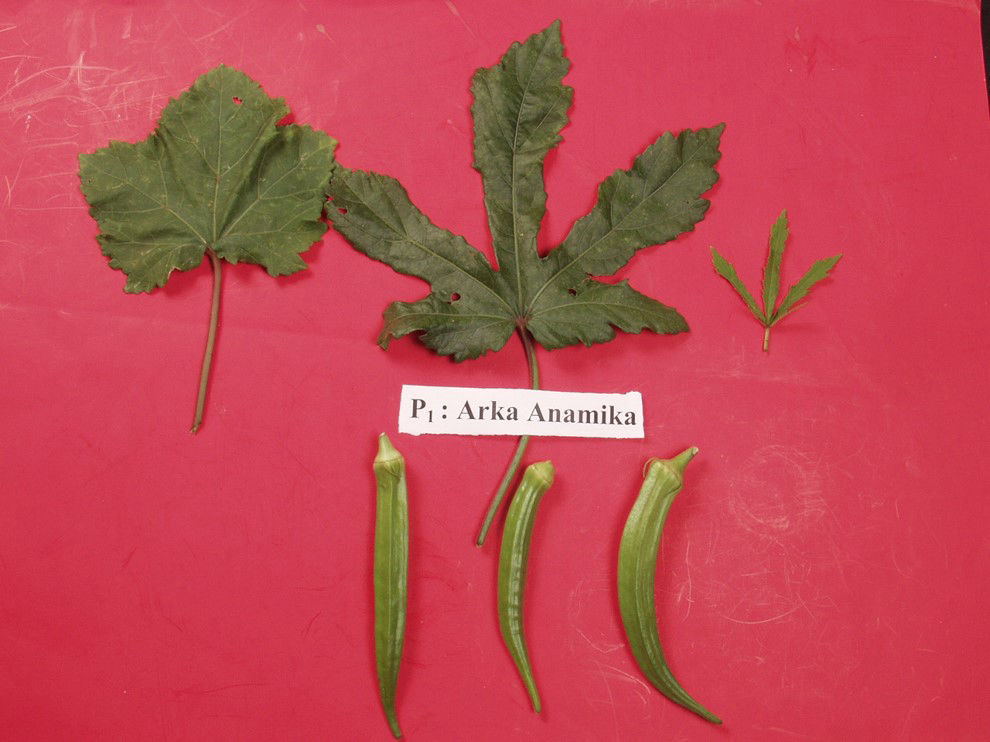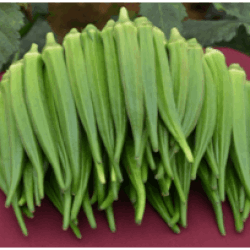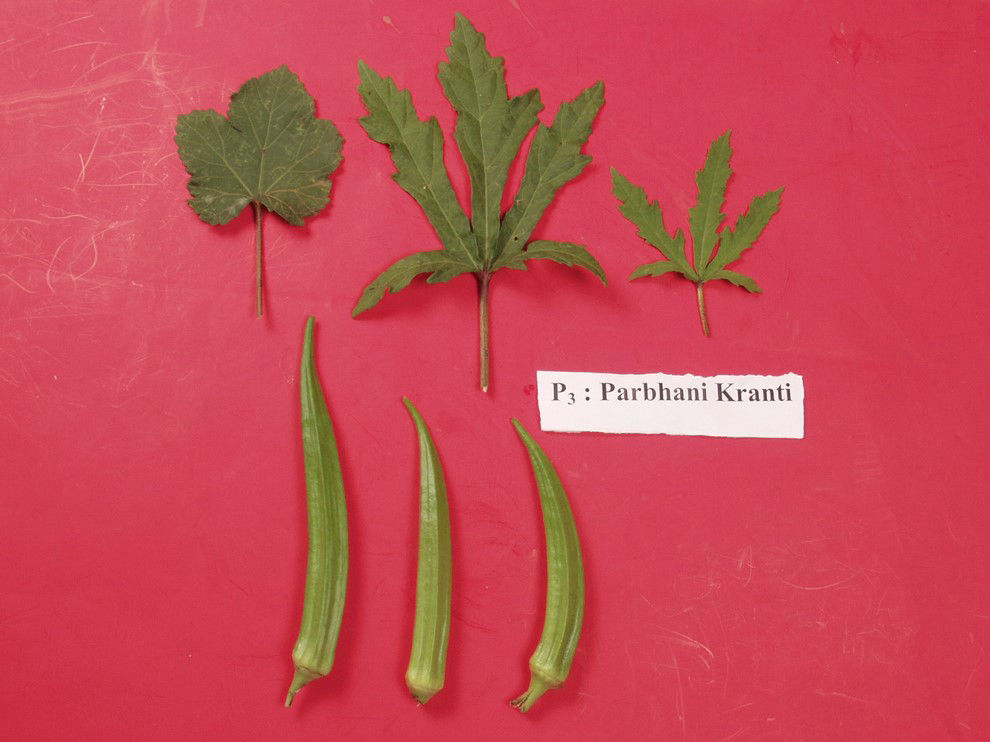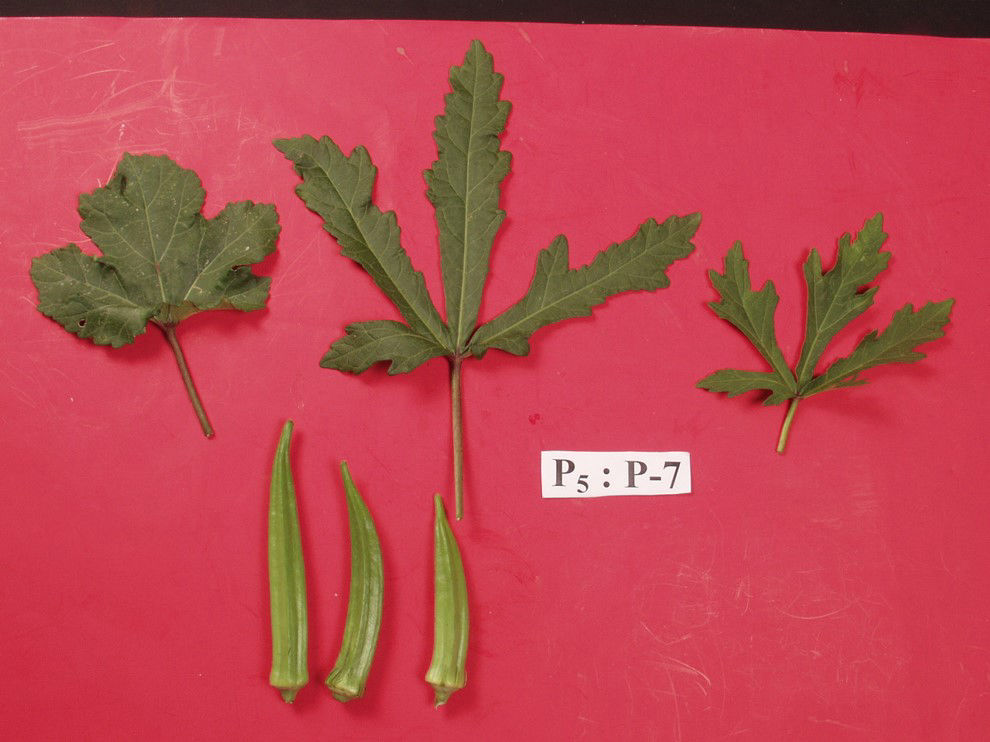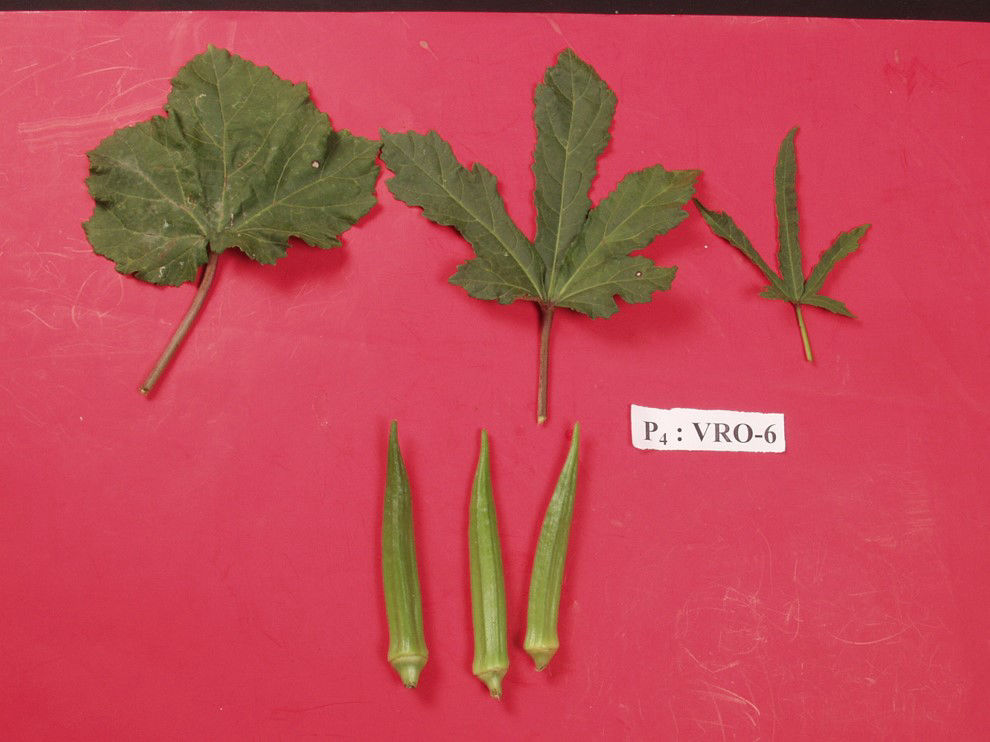Okra promising varieties
Pusa Sawani:- It is cross between IC-1542 and Pusa Makhmali and released from IARI, New Delhi. It has dark green, smooth fruits with five ridges. The fruits are about 10 to 12 cm long at the marketable stage suitable throughout the year. It is susceptible to Yellow Vein Mosaic Virus.
Pusa A-4:- Released from IARI. The plants are dark green with spares pigmentation (occasional) on stem and petioles with usually single stem having stem and petioles with usually single with stem having short internodes (204 cm). The leaves are broad, medium-lobed. The fruits are 5-ridged, attractive, dark green 12-15 cm long having excellent shelf-life. It is resistance to yellow-vein mosaic virus and tolerant to aphids and jassids and least preferred by shoot and fruit-borer.
Co-I:- Released from TNAU. Its plants are tall with 6-8 branches. Stems, shoots, petiole midribs and basal veins of the lower surface of leaf lamina are prominently scarlet red. Leaves are light green, medium-sized and deeply lobed. Petioles are longer (around 24cm). The fruit starts from 5th node. The fruits are glossy, slender,5-ridged, scarlet red (colour non-persistent on cooking), borne on an average 20 fruits/plant. It has field tolerance to yellow vein mosaic virus but is susceptible to fruit-borer and powdery mildew.
TN Hybrid–8:- Released from TNAU. The plants are branched type having sparse pigmentation except on fruits, green foliage and green, 5-ridged, medium-long fruits. It has fair degree of adaptation and is also a high yielder even under north Indian conditions. It is resistant to yellow vein mosaic virus.
Red Bhendi:- Released for southern plains, its fruits are 5-ridged, red, long and slender, fleshy with lesser seeds than Pusa Sawani.It gives good yield under southern plains though its cultivation is limited. The red colour of fruits disappear on cooking. Besides, a number of hybrids from many private sector agencies/seed companies are marketed.
